How to download the latest Scala SMS library from Github
This article is about how you can make changes to the Scala SMS API, located on GitHub, from your computer. This solution will only take about 20 minutes to perform. You will learn how to install Git for windows and TortoiseGit. It will start with downloading Git, and will end with the changes you made visible on GitHub. We assume that you are familiar with GitHub and Scala. The video is easy to follow and detailed so you will have no problem understanding the process. Don’t waste any time! Let’s go!
How to download the Scala SMS API from GitHub (Quick steps)
To download the Scala SMS API from GitHub:
- Create a GitHub account
- Setup GitHub Desktop
- Browse to github.com/ozekisms/scala-send-sms-http-rest-ozeki
- Click Code to copy the link
- Clone the Scala SMS API in Github Desktop
- Paste the copied link on URL tab to Clone
- Launch Ozeki SMS Gateway
- Run the Scala SMS API using InteliJ
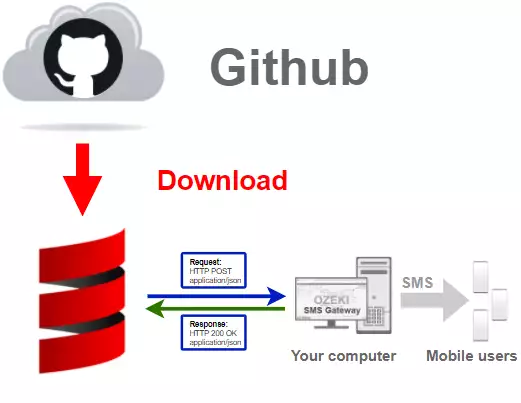
Download Github Desktop
To get the latest Scala SMS library, you have to download it from Github.
To do that, you will need a Github account, and the desktop version of Github.
In the following video I'm going to show you how to download the desktop version
of Github.
You might want to use this link:
https://desktop.github.com/ to download Github Desktop. (Figure 2)
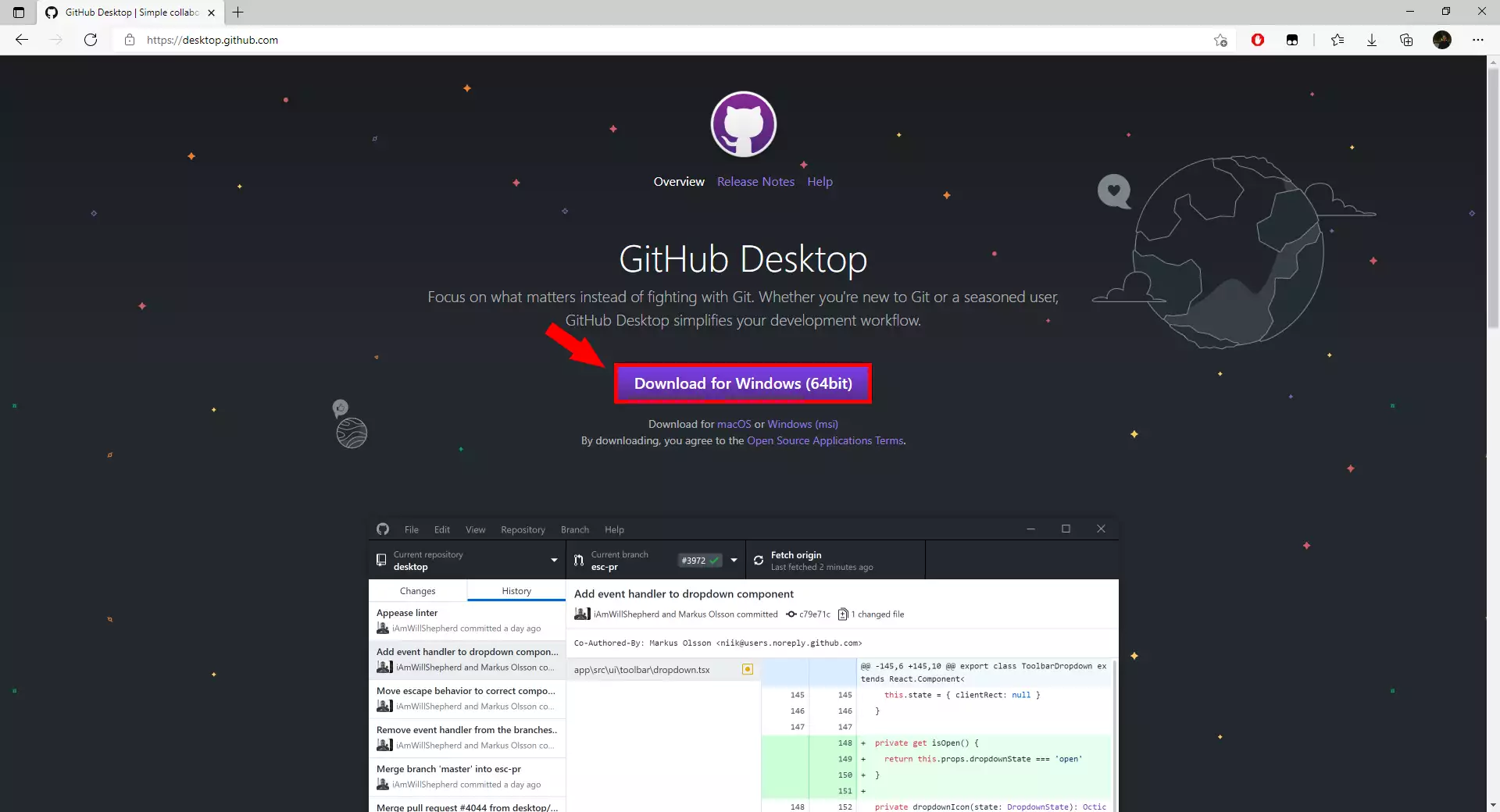
How to download the Github Desktop (Video tutorial)
In this 46-seconds-long video, you will learn about how you can download the Github Desktop installer to your computer. The process will start with opening a new browser page and will end with the installer on your computer. The video is very detailed and easy to understand. The process should not take more than 5 minutes to perform.
Install Github Desktop (Video tutorial)
In order to use Github Desktop we have to install it, and login into our
account. If you you have an account yet, you can use the following link to
register:
https://github.com/join?source=login
In the following video I'm going to show to how to install Github Desktop
and how to login into your account.
Clone the scala-send-sms-http-rest-ozeki repository
If you wish to clone a repository, you need to get the URL of the repository first. You can do this by visiting the https://github.com/ozekisms/scala-send-sms-http-rest-ozeki page. There, you will see a green Code button (Figure 3). Clicking it will open the Code sub-menu, where you will be able to copy the URL of the repository.
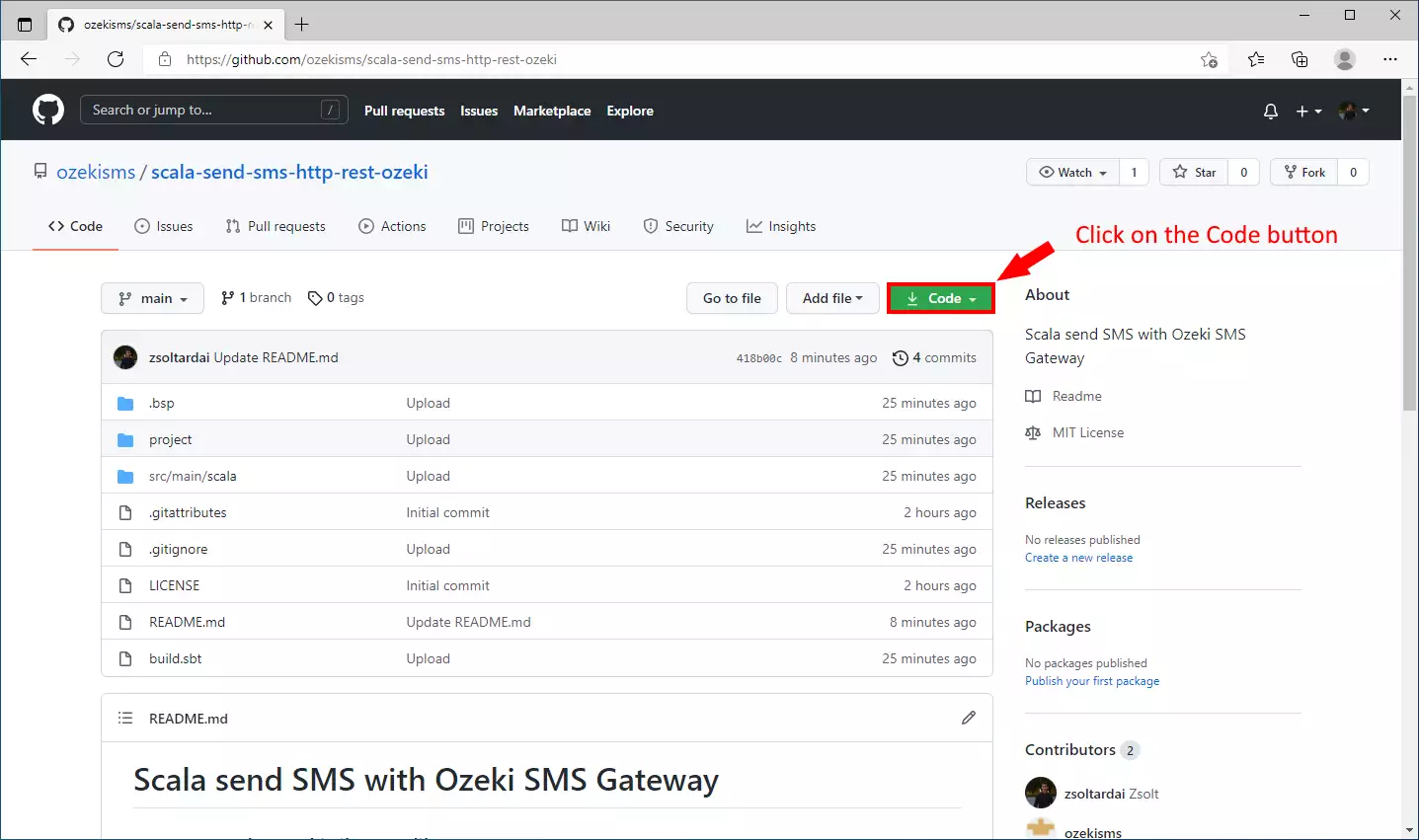
Copy the URL
To copy the URL of the repository, click the 'copy' button located next to the URL bar (Figure 4). It will copy the URL on your clipboard. You can use this text to clone the repository to your computer for local editing.
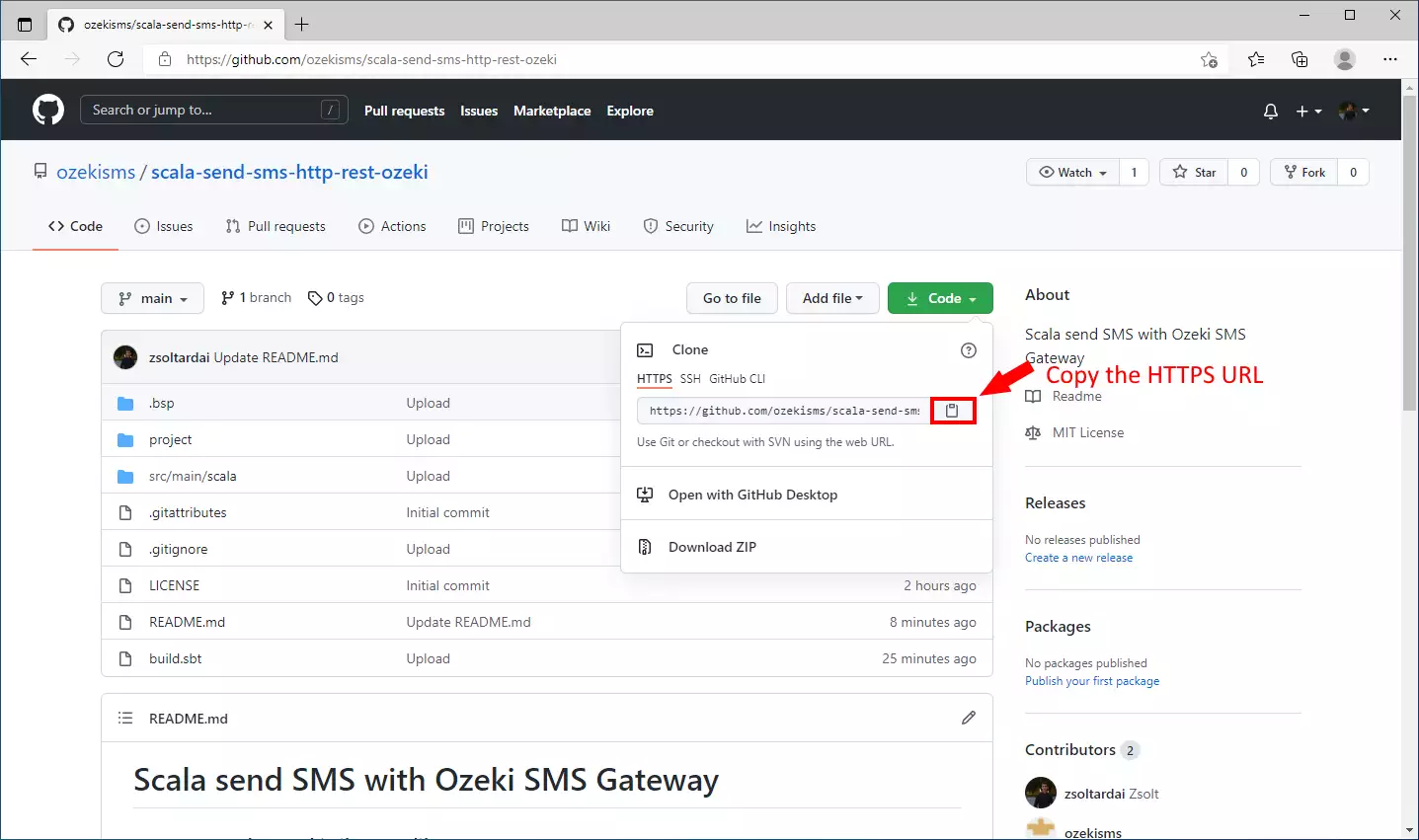
Click the Clone a repository from the Internet... button
In this step, you can see that on the starting page of the GitHub Desktop app, there is a dedicated button for cloning a repository. Click it and it will open a text bar where you could paste the URL of the repository. The button is located under the tutorial repository button with the title: 'Clone a repository from the Internet...' (Figure 5)
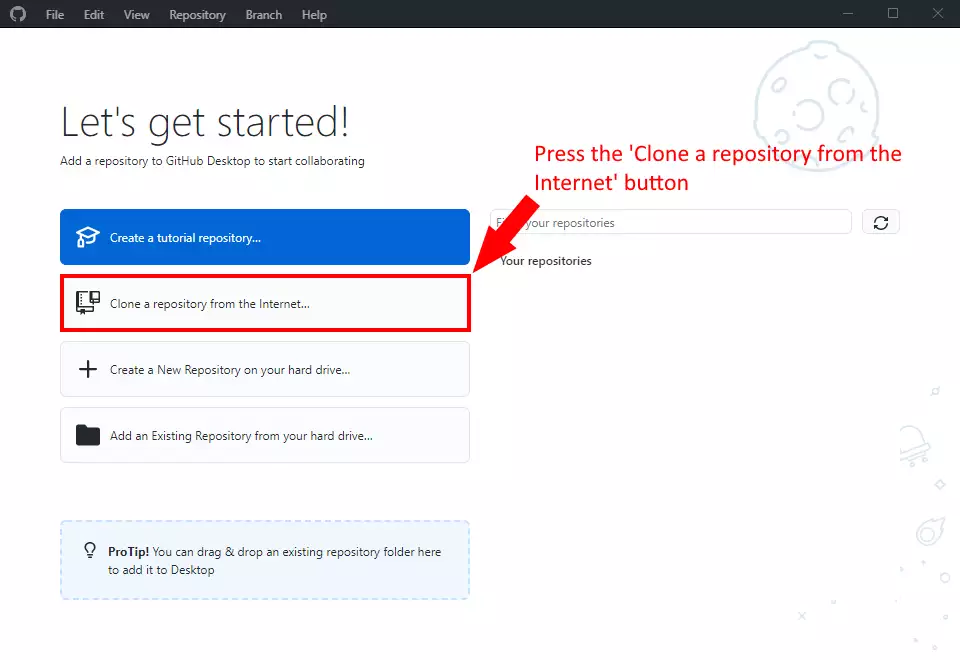
Clone the repository
On this page, you can see how you can clone a repository (Figure 6). The first thing you need to do is to select the URL cloning method. Now you can see a text bar where you can paste in the URL of the repository you wish to clone. The final step is to choose the path where you want to save the files from the repository. If you have finished the setup, click the Clone button. It will finalize your settings and download the files to your computer.
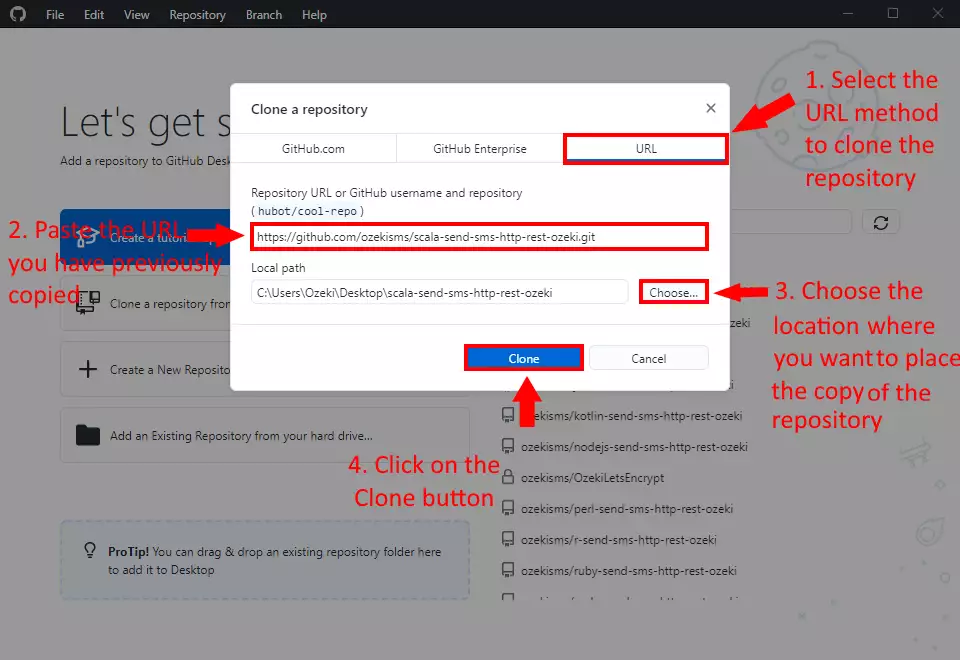
How to clone a repository (Video tutorial)
In this video, you will learn about the process of cloning a repository. The video is only 1:18 long and it features the detailed steps you need to take to finish the procedure. It will start with opening a browser and will end with the files downloaded to your computer for offline editing. You will learn how to copy an URL of a repository and where to paste it if you want to clone it.
The cloned repository
As you can see in Figure 7, the files in the repository are now located on your computer. You can now start editing it offline and make changes in the original repository from your computer with the help of the GitHub Desktop.
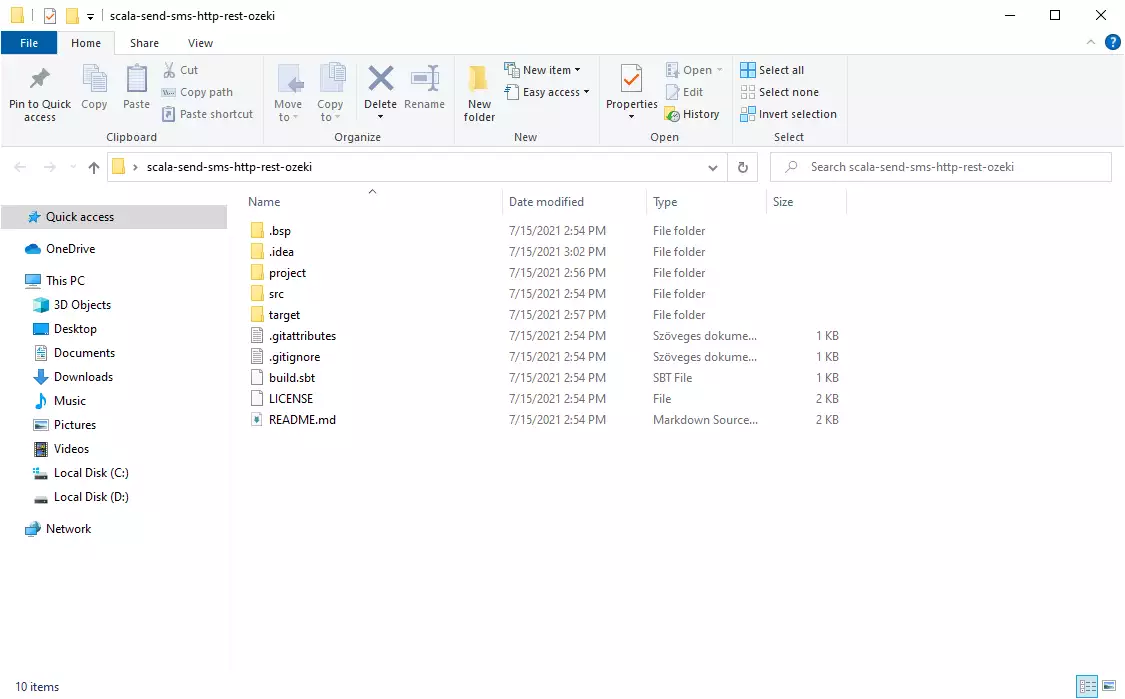
Editing the Scala code in Jetbrains InteliJ IDE
To use the content of the scala-send-sms-http-rest-ozeki repository, you will need
a text editor just like the windows notepad.
In the following video, I'm going to show you, how to use the content of the
scala-send-sms-http-rest-ozeki repository in the Jetbrains InteliJ IDE.
Why should you clone the repository?
The answer is easy, if you simply download the content of the
scala-send-sms-http-rest-ozeki repository, you will have to download the
freshest version every time it gets updated. But if you clone
the repository, you can get the freshest version of it, by just
clicking the fetch button in the Github Desktop application.
In the following video, I'll show you what happens if the content of the
repository got updated, and how you can get the freshest version.
Final thoughts
Now, you can take a rest. We hope this guide was as simple as hard we worked to give you the best.
By following the above tutorial steps, you can create the solution in a short period of time. Now you can use the R SMS API to send SMS messages. If you have already completed the steps, you can enjoy a well-deserved latte or some other treat you have in mind.
Let me mention that Ozeki SMS Gateway allows you to provide an SMS service to your customers, employees or business applications, and it can help you control the messaging activity of these users. If you would like to discover more valuable information about the benefits of other similar solutions, please open ozeki-sms-gateway.com. I hope this page will be useful to all the readers and especially to beginners.
